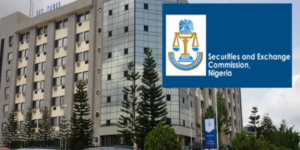
By David Akinmola
As Nigeria grapples with a mounting national debt burden, new data from the Debt Management Office (DMO) sheds light on a troubling undercurrent: the rapidly growing debt of sub-national governments. As of June 2025, several Nigerian states, including the economic powerhouse Lagos, now face debt loads that raise concerns about fiscal sustainability, governance, and developmental trade-offs.
Lagos Leads the Pack — By a Wide Margin
According to the latest compilation of DMO figures, Lagos State tops the list of most indebted states, with a combined debt stock (domestic + external) of ₦2.65 trillion as of June 2025.
The breakdown shows Lagos holds roughly ₦1.04 trillion in domestic obligations, while its external liabilities amount to about US $1.05 billion (converted using the exchange assumption).
Lagos’s towering debt reflects both its role as Nigeria’s commercial and financial hub and the immense infrastructural and social demands it faces. But being first comes with its own risks particularly if revenue streams falter or capital projects fail to deliver returns.
The “Top 10” States: Debt in Perspective
Beyond Lagos, the list of heavily indebted states underscores wide disparities in fiscal stress across the federation. The top 10 (by total debt) are:
| Rank | State | Approx. Total Debt* | Key Observations |
|---|---|---|---|
| 1 | Lagos | ₦2.65 trillion | As above; debt scale far exceeds peers |
| 2 | Kaduna | ₦1.03 trillion | A strong second, trailing Lagos by a wide gap |
| 3 | Rivers | ~ ₦641 billion | Major oil-producing state with large capital needs |
| 4 | Edo | ₦596.90 billion | Elevated, reflecting development demands |
| 5 | Ogun | ₦491.28 billion | Industrializing state with infrastructure pull |
| 6 | Cross River | ₦455.34 billion | Growth in tourism, agriculture, logistics |
| 7 | Bauchi | ₦407.83 billion | Reflects north-centric development deficits |
| 8 | Enugu | ₦355.35 billion | Eastern state with rising capital demands |
| 9 | Delta | ₦291.95 billion | Oil-rich but heavy fiscal obligations |
| 10 | Imo | ₦262.64 billion | Domestic debt fell ~20% in recent quarter, but external remains large |
*Note: Total debt includes both domestic and external components, converted to Naira where applicable per DMO data.
Imo State’s figures are particularly telling: while its domestic debt was reduced from ~₦122.09 billion to ₦97.98 billion (a ~19.75% drop) in recent months, its external borrowing (≈ USD 107.67 million, or ~₦164.65 billion) remains a significant portion of the liability.
Domestic vs External: Debt Composition and Risks
The DMO’s sub-national debt data (published October 2025) confirms that as of June 30, 2025:
-
The combined external debt of all 36 states and the FCT stood at USD 4.81 billion, equivalent to ~₦11.32 trillion (using exchange conversion). dmo.gov.ng+1
-
The domestic debt of states & FCT rose to ₦3.96 trillion (≈ USD 2.59 billion), up about 2.48% from the ₦3.87 trillion recorded in March 2025.
Together, these liabilities reveal that external borrowing constitutes a significant share of states’ debt loads—exposing them to exchange rate risk, foreign currency servicing pressures, and international creditor relationships.
What the Numbers Signal: Challenges & Implications
1. Revenue versus debt burden mismatch
Many states—especially those with relatively weaker Internally Generated Revenue (IGR) bases—face the challenge of servicing debt with limited fiscal space. A high debt-to-revenue ratio may threaten their ability to fund essential services or new capital projects.
2. Capital project viability and returns
Debt is often incurred to finance infrastructure (roads, power, water, hospitals). If projects underperform, states may struggle to recoup investments, leading to further borrowing or fiscal stress.
3. Exchange rate volatility
With large external obligations, states incur exposure to currency fluctuations. A devaluation of the Naira can balloon the cost of servicing external debt, squeezing state budgets further.
4. Creditworthiness and borrowing cost
States with elevated debt may see their credit ratings worsen (implicitly), making future borrowing costlier. High-risk perception from investors or lenders could limit access to favorable funding arrangements.
5. Inter-state inequalities & development gaps
The concentration of debt in more developed, industrial or oil-producing states could exacerbate regional inequalities, especially if poorer states lack both debt capacity and infrastructure.
Voices from the Field
A fiscal analyst in Abuja, who spoke on condition of anonymity, warned:
“Lagos and Kaduna’s debts reflect growth ambitions, but the real test is whether they can sustain servicing without compromising service delivery. In many states, debt is fast becoming a straitjacket.”
Another commentator from an NGO working in subnational finance lamented weak transparency and oversight in many states. According to her, “accountability in how borrowed funds are used is just as important as the quantum borrowed.”
Pathways Forward: Restoring Fiscal Balance
To mitigate risks and build more resilient subnational budgets, experts recommend:
-
Strengthening IGR mechanisms: Investing in tax base expansion, digital collection systems, and revenue mobilization capacity.
-
Rigorous project selection and evaluation: Ensuring debt-funded projects are bankable, yield returns, and are aligned with state priorities.
-
Borrowing discipline and limits: States should adopt clear debt ceilings, borrowing only when essential and when repayment capacity is demonstrable.
-
Debt restructuring and support frameworks: The federal government and DMO may play a role in mediating and helping states refinance or structure obligations.
-
Transparency and stakeholder oversight: Regular public reporting, audit compliance, and citizen monitoring to ensure funds are not diverted.
Looking Ahead
By June 2025, Nigeria’s most indebted states tell a story of ambition, expansion, and fiscal peril. Lagos still dwarfs its peers in debt, but Kaduna, Rivers, Edo, and Ogun illustrate that the pressure is widespread.
As states continue to borrow to meet developmental aspirations, the balance between growth and solvency will be harder to achieve.
The coming years will test the strength of state-level financial systems, governance, and their ability to shoulder debt without undermining public welfare.
If you like, I can produce infographics or charts to accompany this story. Would you like me to do that?






